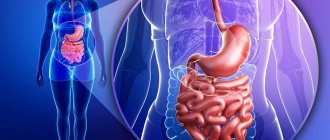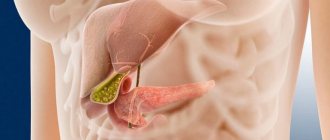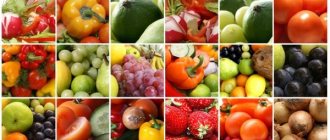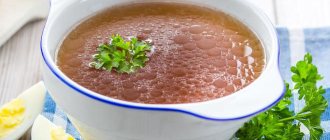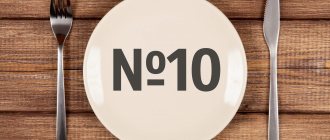The question of eating behavior after poisoning accompanied by vomiting arises at some point in life for almost every person. Here it is important to understand what the principles of nutrition are in such a situation, what foods are incompatible in this case and can again provoke vomiting, and what can be eaten in the case when a person suffers from acetonemic vomiting.
Diet for poisoning
Before considering the key rules of nutrition in case of poisoning, it is necessary to understand that in such a situation the digestive process is disrupted, both in the stomach and intestines .
In this case, one can observe increased peristalsis of the latter and a decrease in muscle tone. There is a release of toxins into the body, which negatively affect both the functioning of the intestines and the functioning of the liver and pancreas. To minimize this impact, you can resort to the help of certain medications, for example, sorbents. However, we should not forget the principles of dietary nutrition. The principles are as follows:
- The intestines require maximum unloading over the next 2-3 days after the poisoning has occurred. Some experts even advise completely eliminating food intake in the first few hours until the urge to vomit can be stopped. Some, on the contrary, recommend eating more often and in small portions, taking two-hour breaks between each meal so that the body gains strength.
- Don't forget about the cooking methods. Preference should be given to boiled or steamed food. During the first day, it is better to choose chicken broth with crackers. To avoid further digestive problems, it is best to exclude high-calorie foods and dishes.
- It is best to gradually introduce new foods into the diet after all the accompanying symptoms of poisoning begin to subside. During the period of recovery of the body, such dishes and drinks as porridge, jelly, as well as vegetables and lean meats are recommended. It is better to introduce and consume foods by adhering to the principles of separate nutrition. This will make it possible to speed up the process of restoring the body's strength.
Nausea and diarrhea
When talking about dietary nutrition for vomiting, accompanied by nausea and diarrhea, you should consider the list of permitted and prohibited foods.
As part of the dietary regime, only light foods that have a simple taste are acceptable. They should be easily absorbed by the patient's body.
The process of digesting food begins from the moment it is chewed, and then proceeds in the digestive tract.
To facilitate the body's work, products must be chosen that do not require any special effort on the part of the body. An example would be semolina porridge or chicken broth with rice. Attention! The consequence of vomiting and diarrhea is dehydration of the patient's body and an imbalance of electrolytes. To avoid this situation, it is recommended to drink more water and light teas prepared on the basis of medicinal herbs. The recommended dose of fluid consumed is 1-1.5 liters during the day. As for herbs, ginger or mint tea will help soothe the stomach lining, which will also help eliminate the urge to vomit.
Medicinal properties of rice
The use of rice water during intoxication is recommended for every person. Rice contains many beneficial substances, but does not contain gluten. This makes it possible to use the product even for people with frequent allergic reactions.
- B vitamins help neutralize bacteria and improve enzyme production.
- Amylose (classified as a prebiotic) helps restore the required level of beneficial bacteria during dysbacteriosis.
- Zinc has an antibacterial and antiseptic effect, reduces the duration of intestinal disorders.
- Phosphorus helps maintain the necessary balances between acids and alkalis.
- Iron is involved in neutralizing toxic substances, improves appetite, and improves blood counts.
Rice water contains a large amount of carbohydrates. Its use allows you to quickly restore strength after poisoning. Another advantage is the lack of stimulation of the digestive system, this allows it to be used in various overdoses.
Consuming rice water reduces irritation and inflammation of the mucous membranes of the stomach and intestines.
What can adults do?
The following are acceptable for use by adult patients:
- bananas;
- herbal teas;
- toasts and crackers;
- mashed potatoes;
- carrots through a grater;
- natural yoghurts;
- compotes based on dried fruits;
- homemade jelly;
- rice, which should be cooked in water;
- broths made from chicken and vegetables.
In addition to rice, buckwheat or oatmeal are also acceptable. You can cook such porridges exclusively with water, without adding oil or spices to them. If we talk about compotes, then you should not abuse sugar, and in the case of teas - various flavorings.
https://youtu.be/zxRLnLUqpbQ
Beneficial features
The benefits of rice water for the body are undeniable - you need to thank for this the incredible complex of elements in the composition. Before you start making rice water, you need to study the beneficial properties of the drink:
- Helps you lose weight. A large amount of carbohydrates promotes prolonged digestion, which increases the feeling of fullness;
- Treatment of diarrhea, slowing down intestinal motility. Removing toxins from the body and overall improvement of condition;
Provides accelerated release of sputum, has a beneficial effect on the respiratory tract and cleanses the lungs;
- It has a diuretic effect and is used to treat diseases of the genitourinary system;
- Reduces fever and has an antiseptic effect, which allows the product to be used for colds, sore throats and flu;
- It has adsorbing properties and treats manifestations of skin diseases;
- Nourishes hair, improves general condition, eliminates dandruff;
- Improves the quality of breast milk in nursing women;
- Reduces stress on the nervous system, improves sleep quality and reduces symptoms of depression.
Now that you’ve figured out what rice water helps with, it’s time to study the possible harm. Please read the information below carefully to understand any contraindications.
Incompatible foods that cause vomiting
In practice, experts have identified a number of products that can stimulate signs of food poisoning, including vomiting and diarrhea:
- Caffeinated and alcoholic drinks can only worsen dehydration.
- Spicy and fatty foods that a weakened body is not able to digest, which can result in further attacks of vomiting and diarrhea.
- Foods that contain a high concentration of fiber, for example, citrus fruits, legumes, cereals, nuts, which lead to overload of the digestive system.
- Apple and pear juices should not be consumed if a person is sensitive to natural sweeteners, as this can worsen diarrhea.
- First of all, you should pay attention and exclude products that contain lactose, since it is this element that the body is not able to digest at the time of an eating disorder. Therefore, all dairy products can only increase diarrhea and vomiting.
In addition to the above, it is recommended to avoid canned food, smoked products and sausages, pastries, eggs, seafood and fast food.
Interesting article: Therapeutic diet after alcohol poisoning: 9 recommendations for intoxication!
What are the benefits of rice?
In case of stomach poisoning, it is extremely important not to overload the digestive organs not only with foods that are difficult to digest and not fully digested, but also with food that can affect the balance of substances in the gastric juice. Boiled rice is gluten-free, making it one of the best foods for those recovering from an intestinal disorder.
In addition to the fact that rice cereals do not contain components that are difficult for weakened digestion, it also contains useful substances necessary for recovery, which have a strengthening effect on the human intestines.
The following components contained in this product are most important in the case of treating food poisoning:
In addition, boiled rice is rich in the following substances:
Nutrition for acetone syndrome
Before considering the rules of nutrition for acetonomy syndrome, it should be clarified that it is understood as a pathology that is characteristic mainly of patients of the pediatric age group, manifested by episodic recurrent vomiting.
In this condition, you must adhere to the following nutritional principles:
- give up products that contain purines and puric acids, as well as organic fats;
- split the daily amount of food into 5-6 meals;
- do not force your child to eat;
- give the child the opportunity to choose his preferred dishes, taking into account the restrictions described above;
- The little patient's menu should include as many alkaline drinks as possible.
A properly selected diet and daily routine make it possible to successfully cope with acetone syndrome in children. During a crisis period, it is necessary to eliminate strong psychological stress in the child, as well as minimize the time spent in front of the TV or computer.
Method of use of the decoction and dosage
How to take the prepared decoction correctly to get a positive result? For adults, the recommended dosage is three to five tablespoons of the product up to five times a day. They refuse other food; if you feel a strong feeling of hunger, you are allowed to eat a small amount of crackers.
The decoction is allowed to be given even to infants. For a child, the dosage is 40–60 ml per day, this amount is divided into several doses.
In case of severe diarrhea and serious poisoning, the amount of the substance taken is allowed to be increased, however, it is not recommended to abuse it.
First month after birth
What can you eat after childbirth during the first month of a baby’s life? There are a lot of restrictions. It is important to follow them in order to establish breastfeeding, restore the health of the intestines and the body as a whole after labor.
In the first thirty days, a nursing mother is allowed to eat:
- low-fat kefir;
- hard natural cheese;
- mashed potatoes;
- all porridges (the only exception is rice);
- vegetable stew;
- first meal;
- boiled fish;
- boiled or steamed meat (dietary);
- green apples (can be baked);
- banana (necessarily ripe, but little by little and infrequently).
Every day it is allowed to drink black tea, but not strong, and still mineral water. You should avoid caffeine, juices, sweets and baked goods, fried, spicy and salty foods, sausages, raw vegetables and alcohol. All this can negatively affect the child’s body, causing an allergic reaction and gas formation.
In the first month after giving birth, a nursing woman’s menu will not be varied
Sample menu for 3 days
On the first day of illness, it is advisable to refuse food; you can eat only if you have an appetite. The daily portion is divided into 6-7 doses to reduce the tension of digestive forces.
This is approximately what your diet should be like in the first days.
- Day 1: homemade crackers, tea without sugar, in the evening you can have weak chicken broth, without vegetables and spices;
- Day 2: fruit jelly, crackers, tea, watery semolina porridge, boiled meat (chicken fillet, veal), weak broth, tea without sugar;
- Day 3: weak fish with meatballs; cottage cheese casserole made from low-fat cottage cheese; steam omelette, crackers, tea without sugar.
If you have diarrhea on the first day, it is recommended to eat bird cherry compote or blueberry jelly and crackers. You can drink whey, which prevents rot in the intestines, or strong tea.
From the fourth day, they gradually return to their usual table, introducing vegetables, fruits, and other foods into the diet. Single servings are increased by reducing the number of meals.
Cooking methods
So how to properly brew a rice drink - there is nothing complicated about it. We offer you two recipes - a more complex one and a simpler one.
First, let's look at a complex option - read how to prepare rice water for a child:
- Soak a tablespoon of cereal overnight (ideally twelve hours) - this will allow the grains to swell and remove harmful substances;
- Place the washed cereal in a saucepan, add 0.6-0.8 liters of cold water;
- Wait until it boils and reduce heat;
- Cook for about 1.5-2 hours, stirring;
- Wait until the cereal turns into mush;
- Strain through a sieve or cheesecloth and cool.
Ready! Now let's look at the recipe for rice water for poisoning. This is a simpler cooking method suitable for adults:
- Take a handful of cereal - 100 g is enough;
- Rinse, place in a saucepan and add a liter of cold water;
- Cover the container with a lid and cook for about 30-40 minutes over low heat;
- Cool the finished drink and strain.
That's all! We have discussed in detail how to prepare congee in two ways. In the next part of the review we will look at some of the features of use for various symptoms.
